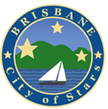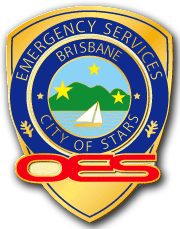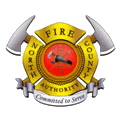Chapter 2b - A Town Called Brisbane
| Previous Segment | Next Segment |
Hard Work and Helping Hands
"I've got a little story to tell about lots..."
It is almost impossible to place these stories of hard times and struggle in the proper context. Perhaps then, the following story from Jim Williams, a long-time Brisbane resident, puts the desperateness of the situation in the proper light. "I've got a little story to tell about lots. They used to give lots in Brisbane away down on Mission Street in the theaters on Bingo Night. A lot of people would turn them down because they couldn't pay the taxes on the lot. In 1932, '33, '34, you could go into a theater for 25-35 cents. But people wouldn't even take them as a prize because maybe the back taxes were $75 or something like that and nobody could pay for it.'
As a boy growing up in Brisbane during the '30s, John Gomez tells how people struggled to survive. "I remember when the freight cars carrying produce were right out here in front of the entrance to Brisbane. They used to carry fruits and vegetables. The cars would go over to the main part of the freight yards where they would be unloaded. Then what they would do is run them down like a side track or spur track, right in front of the entrance to Brisbane where the train depot used to be. There, they would clean the cars all out, the straw that was used to protect the fruit and everything. Well, maybe there was a watermelon in there. Perhaps it may have been cracked. The people of Brisbane would go down there and get those melons. They'd find fruit that may have been bruised or damaged. These were still lying in the straw. That's where people used to get their fruits and vegetables."
Despite the hard times, the people of Brisbane worked to make their town grow. Together, they provided education for their children, created a volunteer fire department to protect their property, formed social and religious organizations to improve the quality of life, and somehow managed to find time to entertain themselves.
There are many examples of this commitment to building a better life during the darkest times of the Depression. In 1930, the Improvement Club was organized and held its meetings in the basement of the Mozzetti home. Within two years, this organization changed its name to the Voters League. In response to the growing popularity of the automobile, Joseph and Charles Mozzetti began promoting their newly built South San Francisco Auto Court, located at the entrance to town. During this time, the Mozzettis also established a school in the basement of their home on Old Country Road.
1932 proved to be a busy year for many civic-minded residents of Brisbane. For example, the Parent Teachers Association was organized, with Mrs. L. W. Prestedge as president. In the same year, the first Girl Scout Troop was also formed and the Brisbane Social Club was created. 1932 also saw the creation of the Brisbane Volunteer Fire Department. The first chief of this unit was Beryl Coffin. Fred Schmidt later replaced him as the head of Brisbane's volunteer fire fighters.
In 1933, the Boy Scouts were organized in Brisbane. One year later, the Brisbane Merchants Association came into existence. George Heywood served as the first president of that group. Finally, in 1937, both the Catholic Church and the Community Baptist Church were founded. The Voters League was also succeeded by the Civic League.

"...a very rural place..."
Finding educational facilities for all the children proved a difficult problem in the 1930s. As Fred Schmidt recalls, "In 1929, Brisbane was a very rural place. Some of the lower part of town had some houses in it. But mostly it was just one big open space.
At first, we had a one-room schoolhouse. I went to grammar school there. But then there was an influx of people into the community to where there wasn't enough room to handle all the children who had to go there. So they were sent over to a larger school in Bayshore while a bigger school was being built in Brisbane.
"Remember that this was the time when we were in a depression period and money was scarce and people weren't working. To get the kids to go to school was a chore because some of the families didn't have the ability to send the children to school. So having a schoolhouse and having it close by was important."
The "bigger school" in Brisbane was ready by 1936. It consisted of four rooms and an auditorium. It also employed four teachers.


“All the firemen got together on it..."
While the citizens of Brisbane struggled to educate their children, they were also dealing with the problem of protecting their property against fire. "In 1934, there were no fire hydrants, nothing for fire protection," remembers Felix Schwenderlauf. "So we had to rely on a volunteer fire department. We figured out a set of plans and started to build a firehouse. We got together enough money to start it. We had the lot and we had enough money to start getting lumber. All the firemen got together on it.
"We trained by burning grass and we had fire drills. We all got together, the chief and the officers, and we mapped out what the training was going to be and we trained in first aid and fires. We got most of our experience by putting out burning grass.

The first Brisbane Fire Department circa 1932
>>>>YOU'RE@ Chapter 2 -- "A Town Called Brisbane" -- Page 21 >>>>>
"There was a fire bell out by the side of Hayward's Store. It was a big brass bell. If there was a fire, and somebody saw it, or somebody wanted first aid, they'd run down and ring the fire bell and the firemen would all come running.
"The biggest fire that I attended to, or the biggest fire that I believe we had in Brisbane, was at Hansen's Ranch when the bay barn caught on fire. We fought it all night."
John Wilson was also a member of the Volunteer Fire Department. "We never had the equipment they got today," he remembers. "For most of our fires, we had a water bucket with soaked sacks. But we did have our Social Club. That was the only thing that kept our Fire Department going. We used to have dances every Saturday night up at the social hall, which is now the Catholic Church. We used to give these dances. Then we used the money we raised to buy gasoline for the one truck we had.
"I also used to be the Santa Claus of the Fire Department. Sometimes we'd use the money from the dances and get big boxes of assorted Christmas candies and we'd get walnuts, apples, and oranges. We'd fix up bags or socks and I'd go around on Christmas Eve. I'd go around before the kids would go to bed -- or, if somebody was in bed, they'd wake them up. I used to get a big kick out of it."
"We are all poor people..."
The spirit of volunteerism and mutual aid was not limited to the Fire Department. Other organizations also contributed to helping the unfortunate survive the hardships of the times.
Reported The Enterprise on December 16, 1932, "The Voters League is giving its attention to the unemployment issue in Brisbane. There are 87 registered unemployed in the town among about 400 families... One man, a war veteran, who
lives in a mud hut, was given aid by league volunteers. Material for a house, furniture, clothing, and labor were all donated. 'We are all poor people, but we're going to handle our problem by mutual aid,' said Jack Wheeler, secretary of the Voters League. 'The people who helped this man may be asking for aid themselves next week."'
Fred Schmidt also remembers how a number of volunteer groups worked together to improve life in Brisbane. As he recalls, "The clubs and organizations within the community started plugging into programs and started donating their time and their money to get things going. They were all important elements in the

community. They offered a lot of the manual labor and a lot of the money to develop things that normally the city government would supply. Now all of these organizations were composed of the rank and file of the community, the average citizen of the community."
One of those average citizens" was Nora Lothrop. "She was just outstanding," recalls Dorothy Radoff. "She and her husband had this big old barn-like house up on Sierra Point Road. They had two daughters -- one about my age,
>>>>>YOU'RE@ Chapter 2 -- "A Town Called Brisbane" -- Page 23 >>>>>
the other two years younger. Mrs. Lothrop didn't want them going outside to seek entertainment. She wanted them to stay at home. So she just opened up her home to all of us kids who were in that age bracket. It was really like a clubhouse. It was a huge place and we would roll up the carpets, and she would let us play the old Victrola and we'd dance and have a club, a teenage club. Looking back, I don't know how she put up with all of us. She was marvelous, just marvelous, because where was there for kids to go at that time?"
Growing Pains
"I used to feel, oh, I'd get so angry..."
Brisbane faced a number of difficult problems during the Depression period. These problems revolved around unemployment, lack of adequate transportation, garbage, sewers, the creation of a Public Utilities District, and keeping gambling and other illegal activities under control.
In due time, a number of these issues were resolved. One problem, however, that would remain with Brisbane for a longer duration was the highly emotional issue of garbage disposal.
For decades, there had been a running war between the city of San Francisco and the people of Brisbane over garbage disposal. "In 1906, they had to have some place to dump all the debris of the San Francisco earthquake and they started dumping here," relates Jim Williams. "That's what started the dumps.
What began as an emergency measure quickly became a habit for the garbagemen of San Francisco. One has only to scan the pages of The Enterprise in the 1930s to see how the situation gradually worsened.
From the November 22, 1932 edition:
"Acting in response to repeated protests from residents of Brisbane, San Mateo County's District Attorney issued eleven John Doe warrants for persons guilty of dumping San Francisco garbage within the limits of the Bayshore Sanitary District. All the men are believed to be employees of the J. P. Holland Co. which has contracted to dispose of some six hundred tons of San Francisco garbage daily on the tidelines near Bayshore. Residents of the district have staged a series of indignation meetings..."
From the December 6, 1932 edition:
"San Francisco dumps garbage at Visitacion Cove at the rate of 650 tons per day. Brisbane and Bayshore are in the front line trenches in this fight against San Francisco and its scavengers.
From the March 14, 1933 edition:
"San Francisco has flaunted the laws of the Bayshore Sanitary District as a racketeer flaunts the laws of state and nation...
From the November 23, 1933 edition:
"The Bayshore Sanitary District is waging a losing battle against San Francisco's dumping of garbage...
From the August 9, 1935 edition:
"Calmly passing its disposal problems to San Mateo County, the S.F. Board of Supervisors decided to continue the fill and cover system at Bayshore for the next ten years over the protests of an aroused San Mateo County citizenry."
Dorothy Radoff recalls how deeply this issue affected the people of Brisbane. "I can remember when I was a kid and we first moved to Brisbane. I got on a school bus along with the others who were going to high school. I went to South San Francisco in junior and senior high school. I can still remember when we'd get off the bus, the kids from South City -- you know how high schoolers are, standing in front of a school or out on a lawn or something -- and they'd say, 'Here comes Brisbane, down by the garbage dump.' I can remember then I used to feel, oh, I'd get so angry.
A Triumph for the Voters League
Another challenge facing Brisbane in the '3Os was constructing an adequate sewer system. Receiving no aid from either the county or the subdividers who sold the lots without sewage facilities, the citizens of Brisbane attempted to solve the problem by creating a Public Utilities District. This organization was quickly racked by scandal and controversy and largely proved ineffective. The Voters League sponsored a movement against the District and it was eventually disincorporated.

“All off for Little Reno..."
In addition to its other difficulties, Brisbane wrestled with the problem of controlling gambling. "You have to keep in mind that Brisbane being unincorporated for so many years, there weren't any policemen stationed right in town," explains Dorothy Radoff. "The sheriff at that time was noted for overlooking things. There was quite a bit of gambling. Some of the bars had slot machines and gambling in the back rooms or upstairs. The sheriff would raid, but somehow, he never seemed to catch anyone, which became very suspicious after a while.
"We became known as Little Reno.' I remember you'd get off the bus and it would be so embarrassing. Depending on the bus driver, most of them would say, 'All off for Little Reno."'
Mary Arcotti shares many of the same memories. "Oh yes," she recalls, "there was gambling. And prostitution too. Up in the hills. Oh, yes, the taxicabs used to come in. There was a lot of gambling going on. You can bet your life.
"I used to cook at the Brisbane Inn. I was working two jobs. I used to work at the coffee shop from six in the morning until eleven. Then at two, I used to work at the Inn from two until twelve at night. They used to have slot machines there. They had them in the back room. And then they hid them behind sliding doors. When the sheriff notified the owner that the police were on the way, they would close them doors when ,}he police came to raid the place. So they never caught them with the slot machines.
Sometimes irate citizens took the law into their own hands. "They had a lot of Chinese here gambling in those days," remembers John Wilson. "Cars would come out here with half a dozen people and they would all go running into this hall. The police had run them out of San Francisco and then Oakland. So, they had this building here and there could have been maybe 100 or 150 of them in there at a time. They would be smoking opium and the smoke would be pouring out of the place. When I was with the Fire Department, guys knew what went on down there. They put one of their trucks down there and hosed the place down. The Chinese inside came running out of there like a bunch of wild cattle."
"People wanted to rule themselves..."
With all of the varied problems facing the community in the '3Os, there were also the first stirrings of a desire for home rule. Fred Schmidt recalls, "There were efforts to incorporate Brisbane. The Social Club and the Voters League were designed to keep the people aware that they were living in an area, that there were things that had to be done. There had to be a water district eventually formed, and things of that nature. So there was a desire to incorporate this community, to break away from county rule. People wanted to rule themselves, and it wasn't such a bad idea..."
But it was an idea whose time had yet to come.
July 4th Parade --1932
The motorcycle contingent for the 1932 Fourth of July Parade
| Previous Segment | Next Segment |










